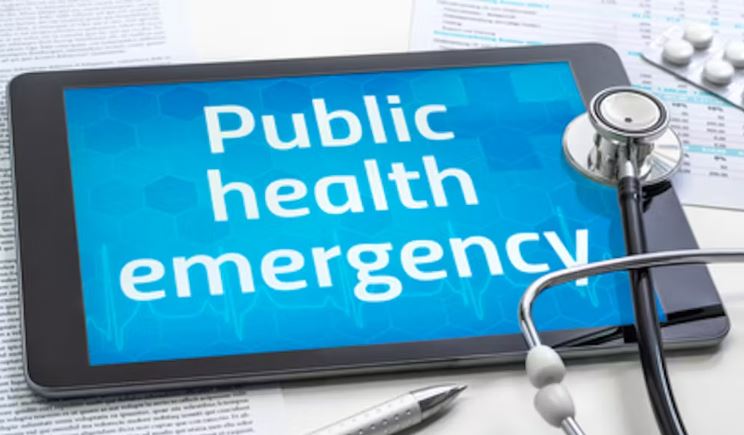
By: Jenny Bender, MPH, BSN, RN, CIC
We are now three years into the COVID-19 pandemic and the CDC reports that cases, deaths, and hospitalizations have been steadily declining, noting that much of the US population has some form of immunity (either due to natural infection or vaccination).1 Based on these trends, the Department of Health and Human Services (HHS) is planning for the federal Public Health Emergency (PHE) for COVID-19 to expire at the end of the day on May 11, 2023.2 In a statement by the Executive Office of the President, released January 30, 2023, the White House wrote: “an abrupt end to the emergency declarations would create wide-ranging chaos and uncertainty throughout the health care system — for states, for hospitals and doctors’ offices, and, most importantly, for tens of millions of Americans.” That said, the end of the public health emergency (PHE) fortunately coincides with some additional policies that will make the transition out of the PHE less abrupt for healthcare, but it will still have a large impact on physicians, insurers, and patients in Pennsylvania.
The Centers for Medicare and Medicaid Services (CMS) has issued a fact sheet outlining the flexibilities that physicians and other clinicians were granted under the PHE to fight COVID-19. This fact sheet also outlines how the end of the PHE will affect all these flexibilities.
Some of the biggest changes in care provision of the PHE included services eligible for telehealth and how those visits were billed. This is one area where an additional policy is being introduced to bridge the gap. After the PHE ends, the Consolidated Appropriations Act of 2023 provides for an extension for telehealth flexibility through the end of 2024. In addition, some behavioral health telehealth visits are being approved permanently and without geographic restriction. Telehealth visits greatly expand the availability of behavioral health care and have been very successful.3
COVID-19 tests will no longer be available for free by mail-order to US addresses, and by law, Medicare does not generally cover over-the-counter services and tests. Current access to free over-the-counter COVID-19 tests will end with the end of the PHE. However, some Medicare Advantage plans may continue to provide coverage as a supplemental benefit. All states must provide Medicaid and CHIP coverage without cost sharing for tests through the last day of the first calendar quarter that begins one year after the last day of the PHE. This coverage requirement will end on September 30, 2024. For private health plans, many insurance providers will still reimburse the cost of over-the-counter tests purchased by enrollees, but the benefits will vary by plan.4
Specifically regarding COVID-19 immunizations – although these immunizations may eventually be paid under a different model, the timing will not coincide with the end of the PHE. The federal government plans to continue purchasing and distributing COVID-19 immunizations, and any federally purchased vaccine will be available at no cost to patients with both private and public health plans. Medicare and Medicaid will continue to cover the entire cost even after the government supply runs out. Private insurance providers will also continue to cover the cost, but there may be exceptions if the vaccine was provided out of network. For underinsured and uninsured Americans, free vaccines will be provided through a CDC program at their local health department.5
Here are a list of resources to help you learn more about the end of the COVID-19 Public Health Emergency:
U.S. Department of Health & Human Services
Centers for Medicare and Medicaid Services
Allegheny County Health Department – Office of Child Development & Early Learning
Jenny Bender, MPH, BSN, RN, CIC is a Clinical Science Liaison at PDI and she also serves as the Secretary of the Allegheny County Immunization Coalition.
References
1. COVID Data Tracker Weekly Review. Centers for Disease Control and Prevention. Published April 10, 2020. Accessed March 31, 2023. https://www.cdc.gov/coronavirus/2019-ncov/covid-data/covidview/index.html
2. Fact Sheet: COVID-19 Public Health Emergency Transition Roadmap. HHS.gov. Published February 9, 2023. https://www.hhs.gov/about/news/2023/02/09/fact-sheet-covid-19-public-health-emergency-transition-roadmap.html#:~:text=Based%20on%20current%20COVID%2D19
3. Department of Health and Human Services. Telehealth Policy Changes After the COVID-19 Public Health Emergency. https://telehealth.hhs.gov/providers/policy-changes-during-the-covid-19-public-health-emergency/policy-changes-after-the-covid-19-public-health-emergency
4. Centers for Medicare & Medicaid Services. CMS Waivers, Flexibilities, and the Transition Forward From the COVID-19 Public Health Emergency. https://www.cms.gov/newsroom/fact-sheets/cms-waivers-flexibilities-and-transition-forward-covid-19-public-health-emergency#:~:text=Testing%3A%20After%20the%20expected%20end,depending%20on%20the%20health%20plan.
5. Pennsylvania Department of Health. COVID-19 Vaccine FAQs. https://www.insurance.pa.gov/coronavirus/Pages/covid-vaccine-faqs.aspx

